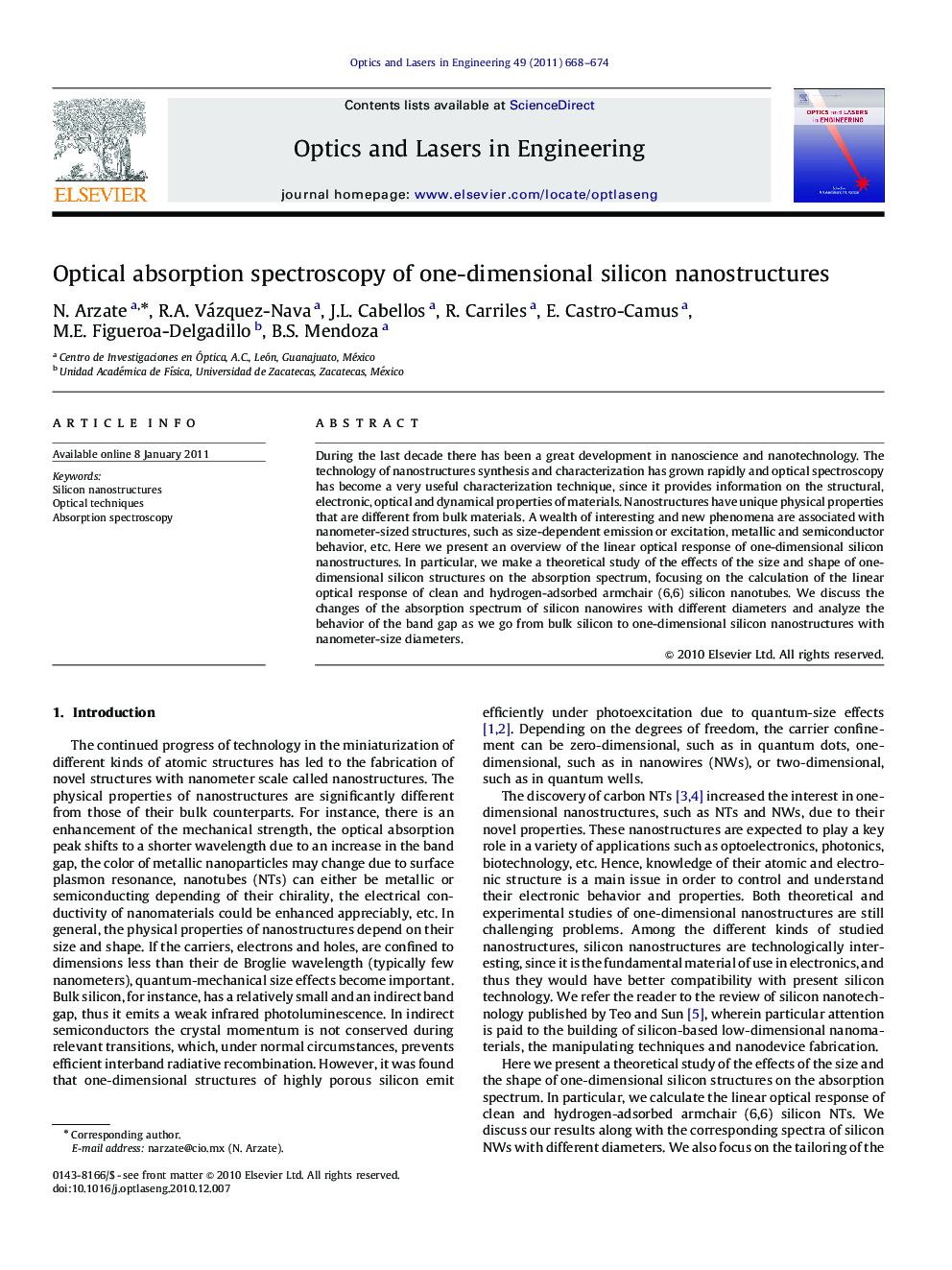| Article ID | Journal | Published Year | Pages | File Type |
|---|---|---|---|---|
| 734964 | Optics and Lasers in Engineering | 2011 | 7 Pages |
During the last decade there has been a great development in nanoscience and nanotechnology. The technology of nanostructures synthesis and characterization has grown rapidly and optical spectroscopy has become a very useful characterization technique, since it provides information on the structural, electronic, optical and dynamical properties of materials. Nanostructures have unique physical properties that are different from bulk materials. A wealth of interesting and new phenomena are associated with nanometer-sized structures, such as size-dependent emission or excitation, metallic and semiconductor behavior, etc. Here we present an overview of the linear optical response of one-dimensional silicon nanostructures. In particular, we make a theoretical study of the effects of the size and shape of one-dimensional silicon structures on the absorption spectrum, focusing on the calculation of the linear optical response of clean and hydrogen-adsorbed armchair (6,6) silicon nanotubes. We discuss the changes of the absorption spectrum of silicon nanowires with different diameters and analyze the behavior of the band gap as we go from bulk silicon to one-dimensional silicon nanostructures with nanometer-size diameters.
Research highlights► Stable silicon nanotubes have sp2 and sp3 hybridizations. ► Clean and hydrogen-adsorbed (6,6) silicon nanotubes show semiconducting behavior. ► The lower the diameter of one-dimensional silicon nanostructures the larger its band gap. ► Absorption edge of hydrogen-adsorbed (6,6) silicon nanotubes is just at the band gap.
